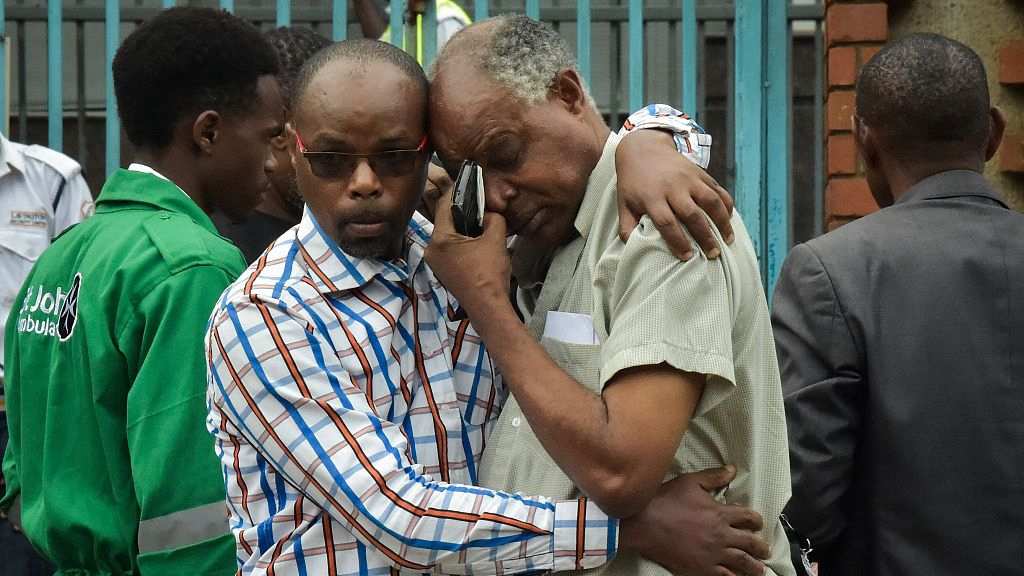Editor's note: Sun Hong is an associate research fellow at the Institute of African Studies of the China Institutes of Contemporary International Relations. The article reflects the author's views, and not necessarily those of CGTN.
On January 15, a luxury hotel complex was attacked by a group of gunmen, leaving 14 dead and dozens more injured. The terrorist organization based in Somalia, al-Shabaab claimed responsibility afterward.
This attack brings the world back into the cruel reality that, despite the resources invested and lives sacrificed, the al Qaeda-affiliated group, al-Shabaab still poses a real and severe threat.
This is not the first time that the populous and animated city of Nairobi has been a target of a high-profile attack. Back in September 2013, fully-armed terrorists stormed the downtown Westgate shopping mall and took more than 200 people as hostages. At least 67 people died before the Kenyan army recaptured the compound.
Apart from Nairobi, the northern border area with Somalia suffers the most of terrorist attacks, especially the county of Garissa and Lamu. The April 2015 assault on Garissa University left 148 dead.
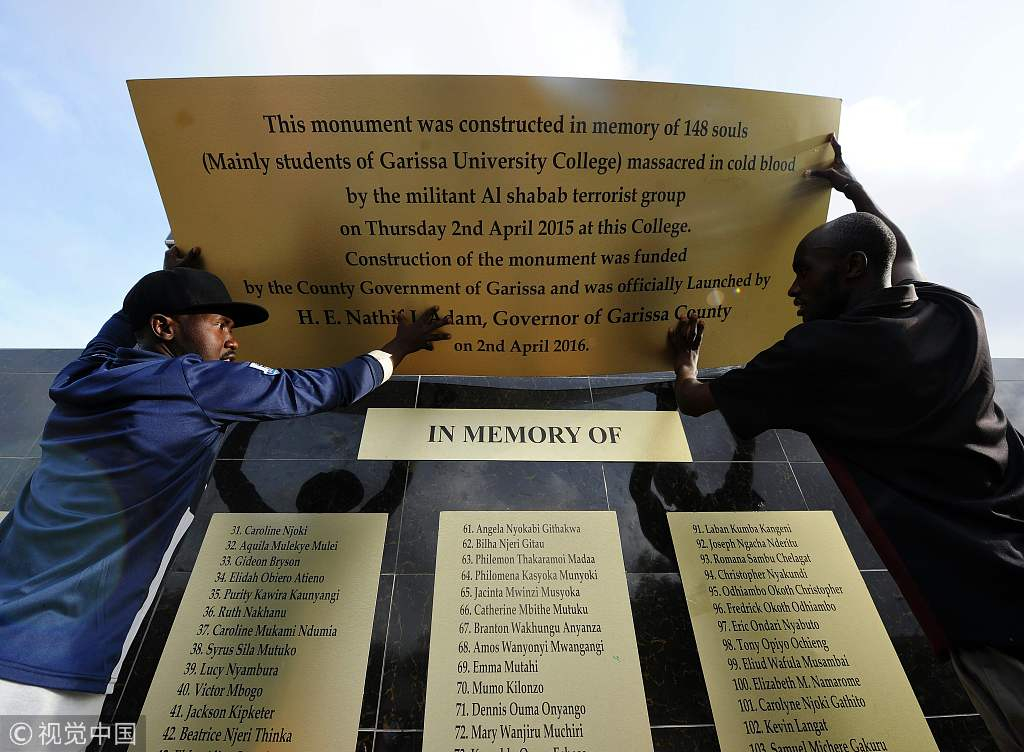
Workers mount a plaque as they work on the memorial for the victims of last year's terrorist attack that killed 148 people on the campus of Garissa University College in Garissa, April 2, 2016. /VCG Photo
Workers mount a plaque as they work on the memorial for the victims of last year's terrorist attack that killed 148 people on the campus of Garissa University College in Garissa, April 2, 2016. /VCG Photo
Retaliation attack
So why is an extremist armed group in Somalia targeting its neighboring country? The most obvious reason is retaliation against the Kenyan government for its role in the decade-long war on terror in Somalia.
Since 2007, the African Union has deployed a peacekeeping mission (the African Union Mission in Somalia, AMISOM) to support the Somali federal government in restoring stability and control over its territory.
With the authorization of the UN, AMISOM is mandated, among other priorities, to reduce the threat posed by al-Shabaab. After a series of kidnapping and cross-border attacks by militants, Kenya joined AMISOM in 2011 and deployed 3,664 troops to southern Somalia.
This move provoked al-Shabaab's retaliation. It has launched more than 100 attacks in Kenya since then. During the past three years alone, Kenya has lost over 100 security agents in its war on terrorism.
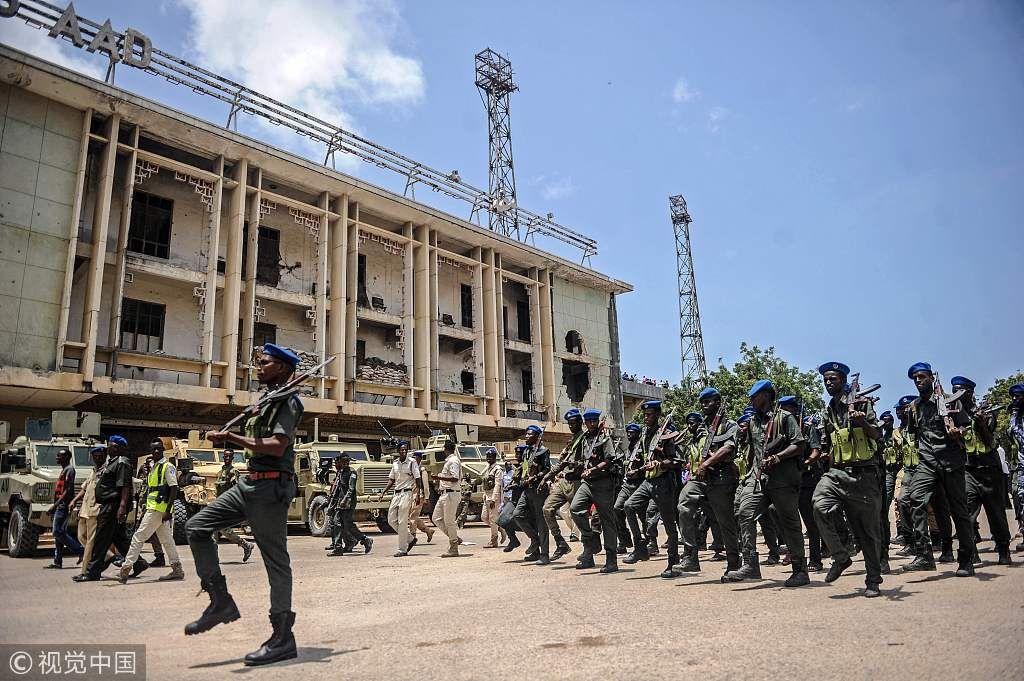
Somali police force attends a handover ceremony as African Union Mission to Somalia (AMISOM) leaves from the Mogadishu stadium in Mogadishu, Somalia, August 28, 2018. /VCG Photo
Somali police force attends a handover ceremony as African Union Mission to Somalia (AMISOM) leaves from the Mogadishu stadium in Mogadishu, Somalia, August 28, 2018. /VCG Photo
A rising threat
The Nairobi attack brings us back to the war on terror in Somalia, a direction that's seen heavy investment from both regional countries and the international community. The EU has been financing 80 percent of the African Union's security budget, the majority of which goes to the AMISOM.
As for the U.S., although the Trump administration is considering withdrawing troops from Syria and Afghanistan, the Pentagon has scaled up airstrikes against Islamic insurgent groups in Somalia.
In 2017, the U.S. launched 31 attacks against al-Shabaab, greater than the total number of the previous years. In 2018, the drone strikes totaled 47. Heavily hit, the group is retreating back to rural areas in southern and central Somalia.
However, the Nairobi attack reminds the world that the course is far from finished. The current counter-terrorism efforts still face several imminent challenges.
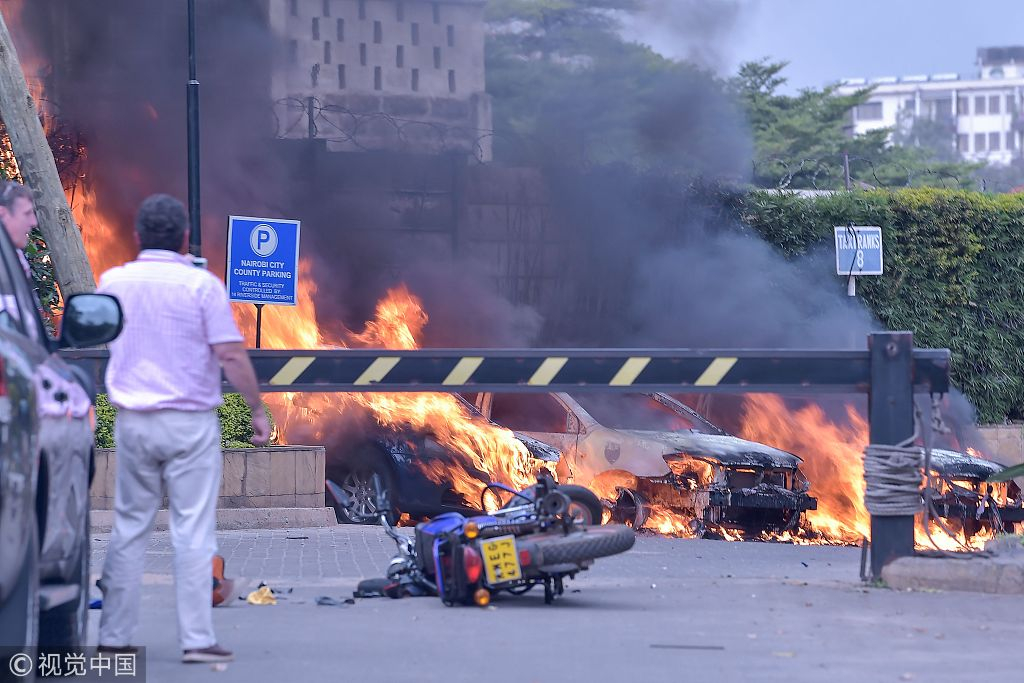
Two men stand next to burning cars at the scene of an explosion at a hotel complex in Nairobi, January 15, 2019. /VCG Photo
Two men stand next to burning cars at the scene of an explosion at a hotel complex in Nairobi, January 15, 2019. /VCG Photo
First of all, the political infighting between the Somali federal government and member states is impeding the formation of a united front against terrorism.
The building of a federal system has been marred by power struggles between Mogadishu and local states. The federal government wishes to have a larger say in state affairs in terms of tax collection, military command and governor nomination, etc.
For example, the federal government disapproved of the presidential candidate in the South West State last December and arrested the nominee, which provoked violent rioting and caused 15 deaths.
As Somali National Army (SNA), the core force in charge of fighting the jihadists, is composed of troops from member states, the power seesaw weakens the SNA's morale and overall combat effectiveness.
Secondly, due to reduced funding, AMISOM has initiated its pullout plan by gradually reducing its foreign military presence in Somalia, wishing the federal government to take over.
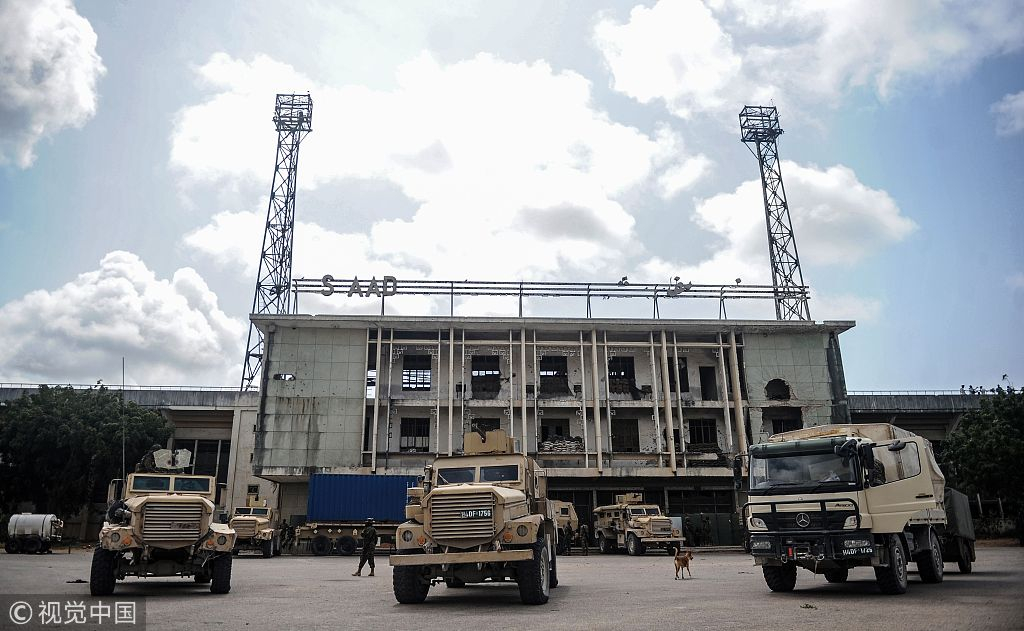
Vehicles of African Union Mission to Somalia (AMISOM) are seen as they leave the Mogadishu stadium after the handover ceremony in Mogadishu, Somalia, August 28, 2018. /VCG Photo
Vehicles of African Union Mission to Somalia (AMISOM) are seen as they leave the Mogadishu stadium after the handover ceremony in Mogadishu, Somalia, August 28, 2018. /VCG Photo
As AMISOM's major donor, the EU has reduced its stipend to AMISOM troops by 20 percent from 2016, which depressed several troop-contributing countries.
Under current circumstances, with a poorly prepared Somali National Army, the pulling out of AMISOM forces will only compromise the results achieved so far. It happened before in 2017, when the town of Elbur in central Somalia was recaptured by Islamic militants after the AMISOM force retreated.
Another worrying fact is that al-Shabaab is not the only threat. Emerging in 2015, the Islamic State in Somalia (ISS) has significantly expanded its zone of influence from the Puntland and headed south towards the capital.
On April 2, 2016, ISS launched its first attack in Mogadishu. What's more, with the collapse of ISIL in the Middle East, the return of fighters to Somalia could aggravate the situation further.
With all these challenges, the fight against terrorism in East Africa is far from over. It takes collective and sustained efforts from the local and international community to avoid the loss of more lives.
(If you want to contribute and have specific expertise, please contact us at opinions@cgtn.com.)

